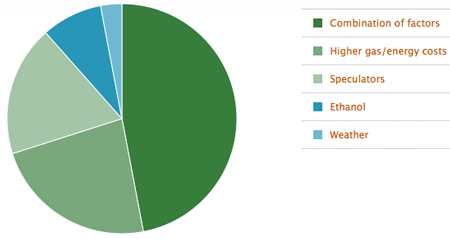The U.S. Department of Energy has released a national ranking of Clean Cities programs that have had the most impact in the reduction of gasoline use. At the top of the list is the Saint-Paul-based Twin Cities Clean Cities Coalition. The group has been instrumental in a reduction of 135,175,133 cumulative gallons of gas displaced between 2005-2009. The release was actually part of a move by the DOE to help accelerate the deployment of electric vehicles (EVs). As part of the program, Energy Secretary Steven Chu announced the availability of $5 million in new funding for community-based efforts to deploy electric vehicle (EV) infrastructure and charging stations.
 “The Department of Energy’s Clean Cities initiative is bringing together local governments and industry to demonstrate the benefits of advanced technology vehicles and help communities use less oil and gasoline to power their vehicles,” said Secretary Chu. “The initiatives announced today are just the latest steps in our broader efforts to reduce America’s dependence on oil, improve our energy security, and save families and businesses money.”
“The Department of Energy’s Clean Cities initiative is bringing together local governments and industry to demonstrate the benefits of advanced technology vehicles and help communities use less oil and gasoline to power their vehicles,” said Secretary Chu. “The initiatives announced today are just the latest steps in our broader efforts to reduce America’s dependence on oil, improve our energy security, and save families and businesses money.”
Much of Minnesota’s efforts to reduce gas use has focused on the use of higher blends of ethanol including E85. The state has more than 360 E85 pumps and was the first to pass a 5 percent biodiesel blend mandate. The cities of Minneapolis, Saint Paul and Brooklyn Park were early adopters of alternative fuel vehicles, as were Hennepin, Dakota and Ramsey counties. The state fleet includes 2,500 flex fuel vehicles that can use E85 or gasoline that used nearly 1 million gallons of E85 in 2010.
“We are very pleased to see the hard work of our many partner organizations reflected in our number one ranking,” said Lisa Thurstin, manager of outdoor air programs for the American Lung Association in Minnesota, which administers the Twin Cities Clean Cities Coalition. “The ranking was determined based on the amount of E85, biodiesel, natural gas, propane and other cleaner-burning alternative fuels reported by each Clean Cities coalition to the Department of Energy.”
The EV program was announced during a call with Chu, Transportation Secretary Ray LaHood, Colorado Governor John Hickenlooper, Tucson Mayor Bob Walkup, and St. Paul Mayor Christopher Coleman.
 The U.S. military plans to up its share of biofuels, including biodiesel and ethanol, by nearly a billion gallons over the next few years.
The U.S. military plans to up its share of biofuels, including biodiesel and ethanol, by nearly a billion gallons over the next few years. Mark Iden of the Defense Logistics Agency confirmed that the US government proposed to purchase several hundred million gallons of drop-in advanced biofuels by 2016, citing an expected demand of 336 million gallons from the Navy and 587 million gallons from the Air Force.
Mark Iden of the Defense Logistics Agency confirmed that the US government proposed to purchase several hundred million gallons of drop-in advanced biofuels by 2016, citing an expected demand of 336 million gallons from the Navy and 587 million gallons from the Air Force.



 The analysis by Bruce Babcock and Jacinto Fabiosa uses a computer model to “rewrite history” by re-creating what actually happened in agricultural markets then removing government incentives to produce and consume corn ethanol. To further isolate the effects of ethanol on commodity prices, they also ran a scenario where ethanol production was frozen at 2004 levels.
The analysis by Bruce Babcock and Jacinto Fabiosa uses a computer model to “rewrite history” by re-creating what actually happened in agricultural markets then removing government incentives to produce and consume corn ethanol. To further isolate the effects of ethanol on commodity prices, they also ran a scenario where ethanol production was frozen at 2004 levels. As gasoline prices edge toward $4 a gallon, ethanol production is declining.
As gasoline prices edge toward $4 a gallon, ethanol production is declining. The program, which is administered by USDA’s Farm Service Agency (FSA) provides incentives to eligible farmers, ranchers and forest landowners for the establishment and production of biomass crops for heat, power, bio-based products and biofuels. FSA Acting Administrator Val Dolcini announced the deadline for submitting project area proposals. “The nation that harnesses the power of clean, renewable energy will be the nation that leads the 21st century. BCAP can help rural communities save money, create jobs and improve air quality while reducing the demand for fossil fuels,” said Dolcini. “I encourage all those interested in participating in this program to contact their Farm Service Agency (FSA) state office for details.”
The program, which is administered by USDA’s Farm Service Agency (FSA) provides incentives to eligible farmers, ranchers and forest landowners for the establishment and production of biomass crops for heat, power, bio-based products and biofuels. FSA Acting Administrator Val Dolcini announced the deadline for submitting project area proposals. “The nation that harnesses the power of clean, renewable energy will be the nation that leads the 21st century. BCAP can help rural communities save money, create jobs and improve air quality while reducing the demand for fossil fuels,” said Dolcini. “I encourage all those interested in participating in this program to contact their Farm Service Agency (FSA) state office for details.” 



